The electric car charger is a charging device specially designed for the battery of the electric bicycle! Classification of chargers: Differentiated by transformers with and without power frequency (50 Hz), they can be divided into two categories. The freight three-wheel charger generally uses a charger with a power frequency transformer, which is bulky, heavy, and costly, but reliable and cheap. Electric bicycles and electric motorcycles use so-called switching power supply chargers to save power and high efficiency, but Easy to break.
The correct operation of the switching power supply charger is: when charging, first insert the battery, then add the mains; after sufficient, cut off the mains, then pull the battery plug. If you pull the battery plug first while charging, especially when the charging current is large (red light), it is very easy to damage the charger.
Commonly used switching power supply chargers are divided into two types: half-bridge type and single-excitation type. The single-excitation type is divided into two types: forward type and flyback type. The half-bridge type has high cost and good performance, and is often used for chargers with negative pulse; the single-excitation type has low cost and high market share.
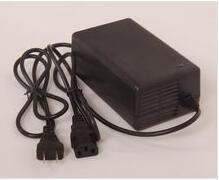
1, the heat dissipation of the charger is not good, causing the resistance of the resistor to drop, then the current is too large, the resistance burns
2. There is a partial short circuit inside the charger, especially the feedback circuit. When the battery is connected, there is no problem from the voltage and current.
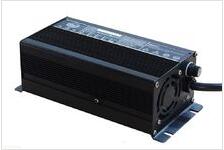
1. The power supply does not start: plug in the power supply, the large capacitor has 300V voltage, unplug the power supply and measure the large capacitor 2 terminal or 300V voltage without falling. After discharging the capacitor, replace the startup resistor. The starting resistor is in the power input section, with a resistance of 150K and a power of 2W.
2, the power supply does not start: plug in, the large capacitor 2 end has 300V voltage, unplug the power supply, the large capacitor voltage slowly drops, the board will be checked for any de-soldering phenomenon, after the repair welding is completed, the 3842 will be replaced with a new one. , power on the test machine.
3, flashing light: first repair the circuit board once again, try again, if it is still flashing, please check the sampling resistance of the output. 0.1 ohms. 3W power. Connect to the negative side of the output line and replace it with a new one.
4, the output voltage is high, power, the voltage is higher than 70 V, the charge does not turn the lamp, first repair the circuit board again, try again, if the voltage is high, please replace the optocoupler, test again, or output high , replace the 431 reference regulator, try again
5, howling, fever, insufficient charging, power measurement large capacitor voltage, as long as less than 300V, the general capacitor failure, replacement can be.
6, severe fever, please replace the fan.
7, the output voltage is unstable, first repair the circuit board once, after the test machine, and then the output capacitor 63V470UF capacitor for a new test machine.
8. Charging does not turn the light, test the data with the detector, and then replace the 358 or 324 with the new test machine.
9, the charging is unstable, sometimes can be charged, sometimes can not be washed, use the tester to test the data, and then the input and output power lines, all renewed, repair welding circuit board test machine
10. Power on the fuse, first check the power tube breakdown. If not, replace all 4 rectifier diodes with the test machine.
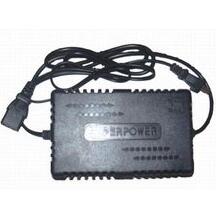
11, no output, no power, test machine, large capacitor 2 end has 300V voltage, and slowly decline, first check the output terminal large diode breakdown does not, repair welding, test again
12, power on 2 red lights, power test machine, no-load voltage is normal, and then 358 or 324 for a new test machine,
13, no power output, can start normally, the indicator light is normal, first replace the output line, for the relay with the relay directly short-circuit relay test machine,
14, power flashing lights, please repair the transformer pins, and then test the machine, if still, please check 431, optocoupler, output part of each diode is short circuit, transformer core is loose, power input part 10 ohms small resistance open circuit. Or replace 3842 again test machine
15, charging does not turn the light, first use the tester to test the data, generally charge new battery voltage is not higher than 59.5, charge half a year or so battery is not higher than 58.8, is normal, higher than this voltage may not turn light
16, low output voltage, repair welding circuit board. Test machine, then replace the input and output capacitors and test again
17, the output is low, hot, if the output voltage is lower than 40 V, and the power tube, the transformer is hot, generally there is a problem with the transformer,
18, difficult to start, sometimes can not play sometimes, repair welding circuit board, after the test machine, if you still need to replace the input part of the small capacitor again test machine, 50V47UF
19, burn 3842, 3842 after the new test machine plug-in to hear a sound of a click, this is to measure the large capacitor 2 terminal voltage 300V slowly, indicating that 3842 is broken down, first repair welding circuit board, check the transformer Whether the foot is loose or the lead is disconnected, the output part of the large diode is open circuit, the circuit board is broken,
20. The above faults are suitable for most common single-tube circuit chargers on the market. You can consult technical personnel at any time during the operation.
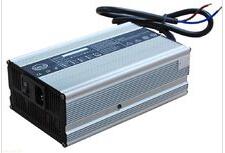
1. The charger with built-in fan cooling method will have certain noise during operation (that is, the airflow sound generated when the fan blade rotates), which is a normal phenomenon.
2. When charging, plug in the battery first, then plug in the AC power plug. After charging is completed, unplug the AC power cord and then unplug the battery.
3, there is high voltage inside the charger, it is forbidden to disassemble by itself; do not touch the power plug with wet hands, and should not be used in the environment of humid, flammable and explosive gas;
4. When the charger is working, it will generate a certain amount of heat. Please pay attention to ventilation. Do not cover the charger with foreign objects; do not carry it with the car to avoid damage. Do not charge non-rechargeable batteries;
5. If there is any abnormality such as smoke or burnt smell during the use of the charger, the power should be cut off immediately. If the charger fails, it must not be repaired without authorization and must be returned to the manufacturer for repair;
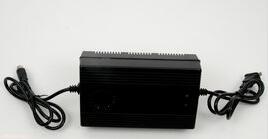
1. Do not replace the original charger at will.
The charger parameters of different models are basically different. Most people don't know about the charger. If the charger is broken, they can replace a charger at will, so I don't know how much damage is caused to the battery. Don't feel free when you are not sure. Replace the charger.
First, determine the battery voltage V of the electric vehicle or the output voltage of the original charger.
Look at the battery judgment voltage: There are several batteries in the general battery pack. The model number is 6-DZM-12/20, which is 6, indicating that each battery is 12V. So, you see that your own electric car has several batteries, and the four batteries are 48V. For the 8-DZM-12/20 battery, each battery is 16V, and the four batteries are 64V.
2. Determine the battery capacity AH of the electric vehicle battery or the output current of the original charger.
1) Look at the original charger to determine the capacity: the original charger output current is 1.8A. The battery is 12AH.
2) Look at the battery judgment voltage: Generally, the battery inside the battery box has a write model, such as 6-DZM-12, 12 indicates that it is a 12AH battery, and 6-DZM-20, 20 indicates a 20AH battery.
3) Judging according to the mileage of one run of charging: Generally speaking, the battery of 1 year or so is full of 25-40 kilometers, and the charger of 12AH is more suitable. Running 45-60 kilometers, 20AH is more suitable.
Finally, determine the positive and negative shape of the charger interface of the electric vehicle.
There are four kinds of interfaces on the market, such as T-type heads, three-vertical heads, medium-horizon heads, and round heads.
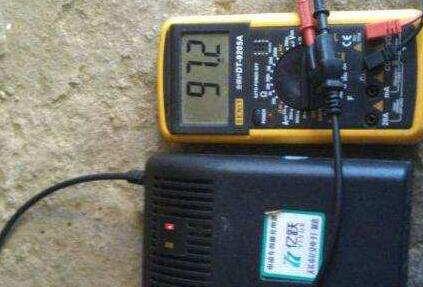
2, do not buy low-quality inferior charger
When the battery is saturated, the inferior charger fan stops working and no longer dissipates heat. When the battery is overcharged, if the cooling fan stops working again, the temperature of the charger will increase exponentially, not only will the charger burn out, but a short-circuit fire will occur in severe cases.
In general, there are four reasons for battery damage: water loss, vulcanization, imbalance, and thermal runaway (filling drums). The first two items accounted for almost 97% of the market's battery damage. The charging mode is different, and the water loss is different. Therefore, it is guaranteed to choose a premium brand charger that passes the national test.
3, the charger can not be violently bumped
The electric appliance is basically not resistant to strong vibration. Strong vibration may cause the potentiometer inside the charger to drift, causing the charger to be in an abnormal state of charge or even causing an accident. Therefore, the charger should not be placed in the trunk and basket of the electric vehicle. If you really want to carry it, place the cushioning material in the car kit to avoid bumps and vibrations caused by bumps.
4, pay attention to the charging environment
At present, electric vehicle chargers are designed according to the ambient temperature of 25 ° C, so it is better to charge at 25 ° C. The ambient temperature is actually relatively small at 25 ° C, so there is bound to be a problem of under-charging over-charging in summer. Charging is also an exothermic process. It is best to charge the battery and charger in a ventilated indoor environment.
5, the charger does not cover the item
The heat dissipation of the charger is helpful for both charging safety and the life of the charger. Therefore, when charging, do not cover with clothes, quilts, etc., which may cause fire.
Always remember the manufacturer's instructions during the charging process, and strictly observe them, especially during the charging time. Don't think that the longer the time, the larger the capacity. If the time is too long, the battery will be damaged and the life of some components of the charger will be shortened. And even caused a fire.
Wuxi Ark Technology Electronic Co.,Ltd. , https://www.arkledcn.com